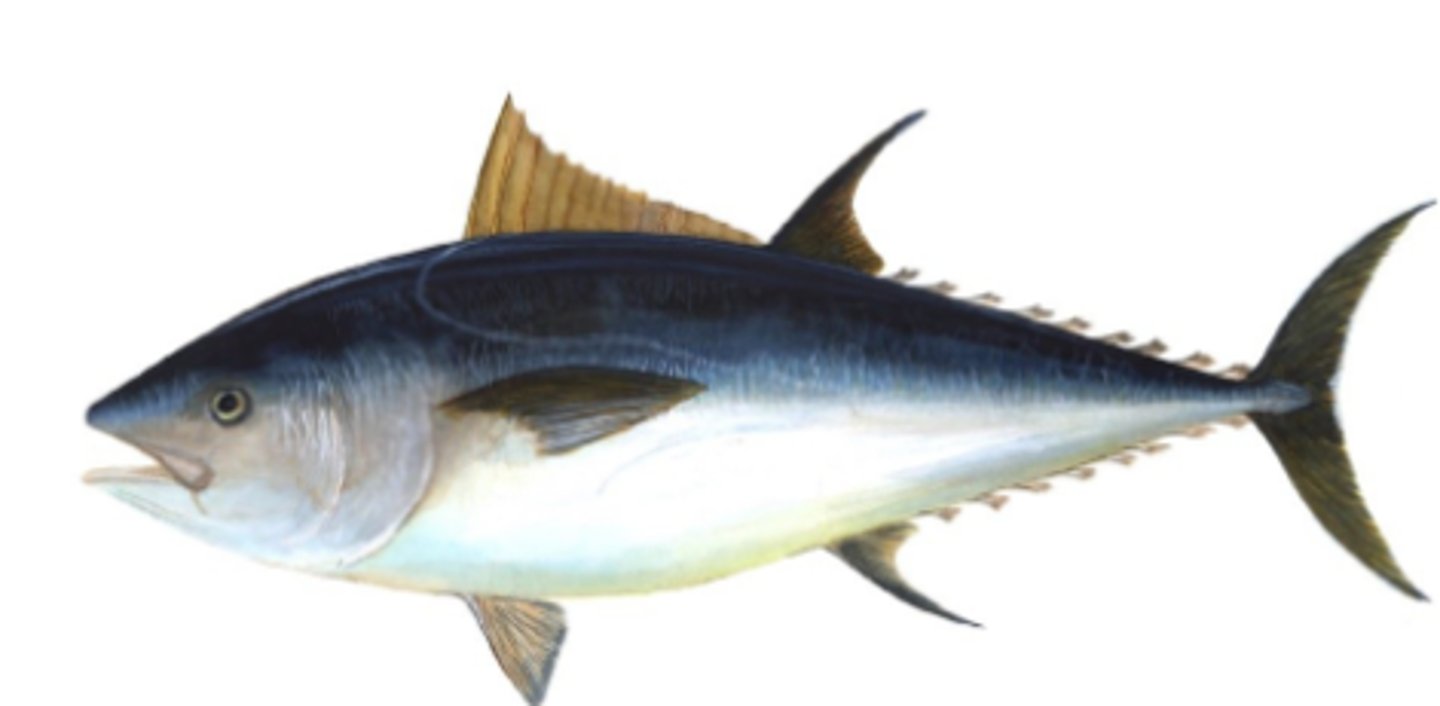Review - Chordates and Fishes
1/33
There's no tags or description
Looks like no tags are added yet.
Name | Mastery | Learn | Test | Matching | Spaced |
|---|
No study sessions yet.
34 Terms
Notochord
Rod like structure, used for support
Dorsal Nerve Cord
Main nervous system
Pharyngeal Slits
Used for feeding, turns into inner ear in tetrapods
Endostyle
Secretes mucus, turns into thyroid
Postanal tail
Used for propulsion
Tunicate
Sessile, specialized chordate. Common in oceans.
Lancelet
Swimming chordate, feeds with pharyngeal slits
Earliest fish description
Invertebrate, boneless, and jawless
Ostracoderm
Primitive jawless fish with bony plates on head
Placoderm
Large, primitive fish with bony plates and jaws
Living fishes in the Agnatha
Hagfish and Lampreys
How hagfish protect themselves
By producing large amounts of mucus
Lamprey feeding
They are vampiric, sucking body fluids of fishes
What region did lampreys invade?
The great lakes region
Chondrichthyes
Class including sharks, rays, and skates
Difference between skates and rays
Skates have no stinger and short, thick tails; Rays have stingers and long, whip-like tails
How do Chondrichthyes maintain buoyancy?
They have an oily liver
Senses used by sharks
Smell, vision, hearing, sensing electrical impulses
Shark specialized sensory pits
Ampullae of Lorenzini, can detect electricity and magnetic fields
What are shark scales like?
Placoid scales, like teeth embedded in the skin
Shark tails and buoyancy
The heterocercal tail pushes the shark upwards
Shark teeth
Pointy - for eating fish and invertebrates. Triangular - for cutting through the hides of mammals
Shark vs bony fish fins
Shark pectoral fins are on the bottom, bony fish pectoral fins are by the gills; Shark pelvic fins are in the rear, bony fish pelvic fins are under the gills
Muscle color in fish
Fish that continuously swim fast or sprint usually have more red muscle; Fish that swim slowly or live on the bottom typically have more white muscle
Salt regulation in sharks vs bony fish
Sharks have a rectal gland, they just get rid of salt whenever they have to; Bony fish regulate salts by how concentrated their urine is and by pumping salt in or out with chloride cells in their gills.
Holocephali
group that includes chimeras and ratfishes
Batoidea
Group that includes the skates and rays
Galeomorphi
Group that includes the modern sharks
Squalomorphi
Group that includes primitive sharks
Medial fins
Used for stability
Paired fins
Used for turning and stopping
Rounded, thick fish tail
Present on slow, powerful swimmers

Triangular, semi-thick fish tail
Present on sprinting fish

Thin, tall, narrow fish tails
Present on continuous high speed swimmers
